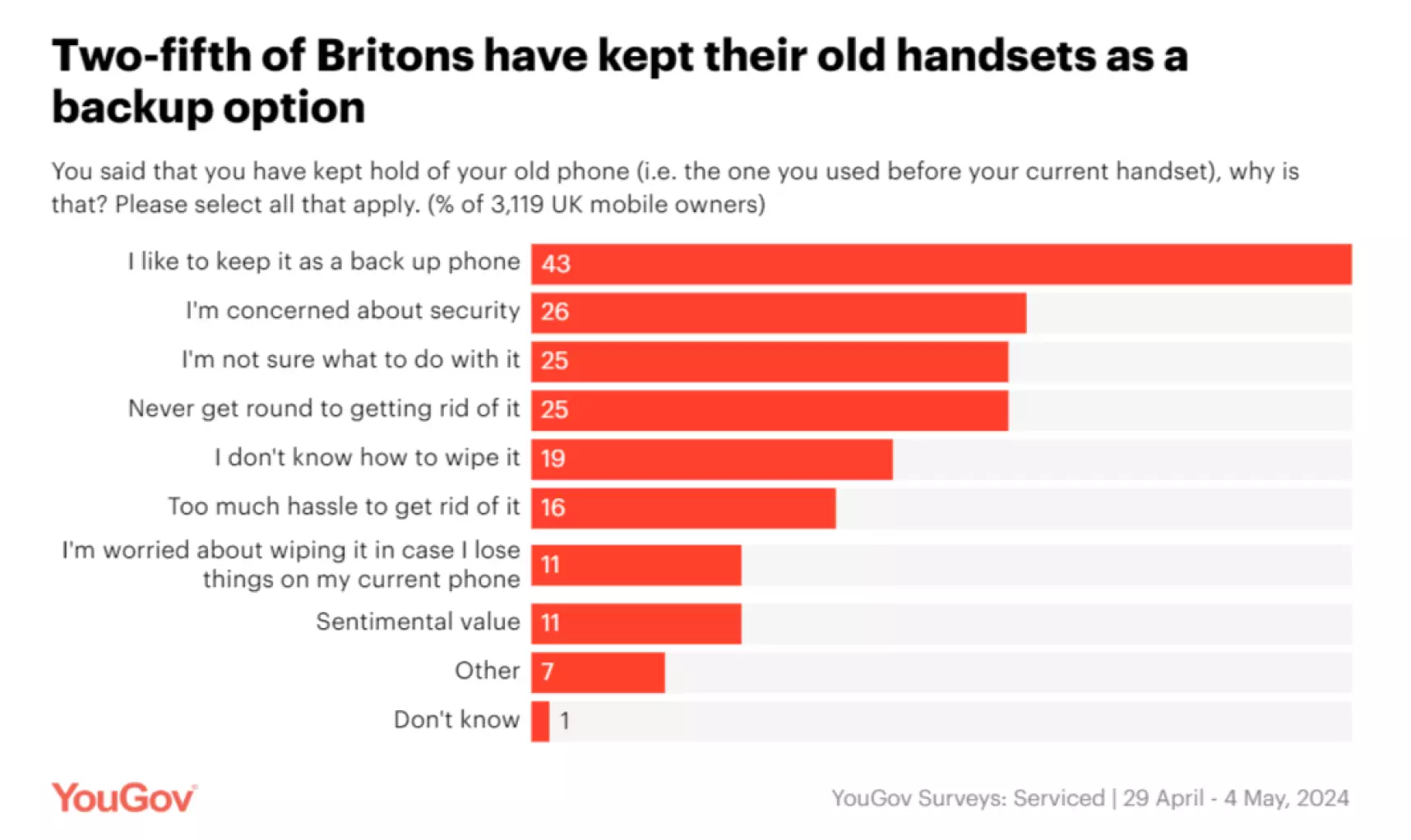Imagine you’ve just set up the ideal trade-in solution for your stores. Everything has been thoroughly prepared, sales agents are fresh out of training and ready to spot the smallest scratches or pixel damage, promising campaigns welcoming anyone arriving in your stores. Yet, customers aren’t eager to give up their old devices.
Trade-in offers continue to increase in value year-over-year. For example, in the US market alone, some carriers offer up to 25% higher value for trade-in deals in 2024 versus the same time a year before. Despite this, offering a higher residual value isn’t the main contributor to activating trade-ins and subscription upgrades. Simple, often emotion-driven aspects can make people think twice and they’ll end up leaving the store with two devices: the new one and their old trusted companion.
Let’s explore some of the most common reasons we’ve come across in the industry and what our partners can do to boost their trade-ins.
The natural need for having a backup plan
A recent study conducted in the UK aimed to find out what people do with their old phones. While a good quarter of the respondents opted for a trade-in, 52% decided to keep their old phone. The number one reason? Wanting a backup.

Of all the solutions available, trade-in would be the most sensible option. Keeping the devices without any actual plan besides waiting for the “what if…?” does no good to the device, the owner’s wallet, or the environment. E-waste is a rising problem globally, and the rare minerals used in tech production are not infinite. From an environmental perspective, used devices must be regularly retrieved from the market and given an opportunity for a new life, instead of leaving them idle in drawers or simply allowing them to be thrown away to end up in landfills.
However, from a consumer’s perspective, a backup feels like a natural thing to want. Nomophobia is real, and while it’s often related to social media addiction or the general need for “feeling connected”, a smartphone holds many more keys in today’s digital society. A phone may be your primary option for authentication or security services, for handling banking and finances, for daily navigation and transport, and much more.
All of the above seem very valid reasons why a customer may hesitate to trade in their old device. However, there are some options to help seal the deal.
Offer additional products and services to protect the device
A trade-in can easily be combined with additional services or products that help minimize the risk of something happening to their new device.
In principle, customers save money with a trade-in deal, which means they could add:
- cases and covers
- insurance
Any type of protective gear will lessen the physical risk of breaking the device. Moreover, insurance usually includes a backup phone or reimbursement in case of damage, theft, loss, or any other reason the customer might find themselves without a device.
People often forget that while their discarded phones have no physical damage and hold power, lack of system updates or software compatibility might eventually still render them useless. Thus, getting a backup phone via insurance would likely be a much better alternative than using the one they’ve kept in the drawer for a few years.
Transparency is key to beating limited knowledge and trust issues
Trade-ins are still quite a new concept overall, and explaining the bigger picture is something your sales agents can use to gain customers’ trust. The topics are multifold: starting from how the service works technically, to questions about data security, remarketing, and environmental aspects.

Transparency is key to any good partnership and the right partners will provide you with data. Starting from which devices were traded in, how many, and down to what happens to them depending on their condition. Share this data with your employees, so they can be confident in telling customers how your trade-in partner handles the devices.
For example, with a service partner like Foxway, who handles all the steps from buyback to remarketing, it can be very reassuring to know that most devices get a new life straight after data wiping, or that as much as possible will be used for spare parts.
Additionally, it’s a great opportunity to educate consumers about the general need to shift to more circular ways of consuming tech and moving away from the “take, make, throw away” mindset. Keeping devices in use longer and not allowing them to sit idle is one way of starting the transition. Each time a used phone finds a new life, it can avoid up to 95% of CO2e worth of emissions.
Can you overcome sentimentality or pure laziness?
Sometimes customers are simply not ready to let go of their trusted companion because it carries memories. Figuratively speaking, there are people who just get emotionally attached to things. But if the device carries memories in a literal sense (photos, videos, or other personal data), then there can be an easy fix. Offer customers the possibility to transfer data from one device to another in the store or suggest cloud storage.
However, even with these options, customers might feel hesitant and wish to complete the transfer at home to make sure nothing valuable gets lost in the process. Additionally, without prior experience with trade-in programs, one can also easily assume it’s a tedious process not worth their time.
The key here is to make your trade-in solution comfortable and easy to use. Whether you have integrated an in-store or online trade-in, there are multiple nuances to think of for the perfect setup.
For example:
- Can your customers get an immediate discount or voucher in the store, but then return the device within a certain timeframe so they can take care of data transfer at home?
- Would your customers need to find a store, or can they send the device by post in a package provided by you?
- Can you offer a discount on a cloud storage subscription to spare your customers from scouting for a suitable option?
Depending on your business, there’s plenty more to take into consideration. But with a well-integrated solution, even the most hesitant or laziest consumers will find it easy to complete their trade-ins.
Prioritize getting to know your customers and business will soar
Understanding the simple, emotion-driven, and practical reasons why customers hesitate to trade in their old phones can be essential for creating a service experience that will take your business to completely new heights.
By offering well-designed, convenient solutions that prioritize transparency, companies can build stronger customer trust. This approach also helps businesses gain deeper insights into their customers’ needs. It’s a gift that keeps on giving as this knowledge naturally paves the way to providing an even better service in the long run.
Retail & Online Buyback Buyback Trade-in-value




